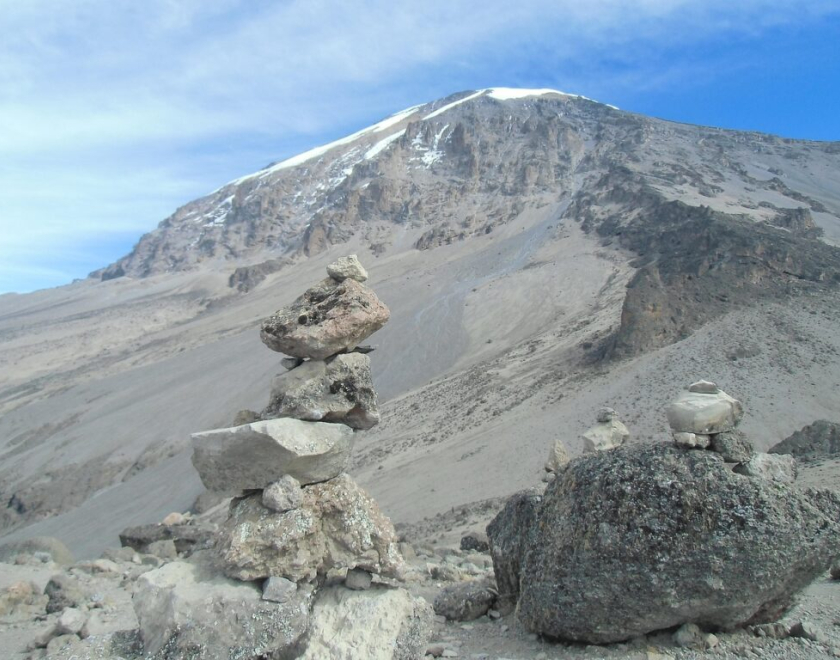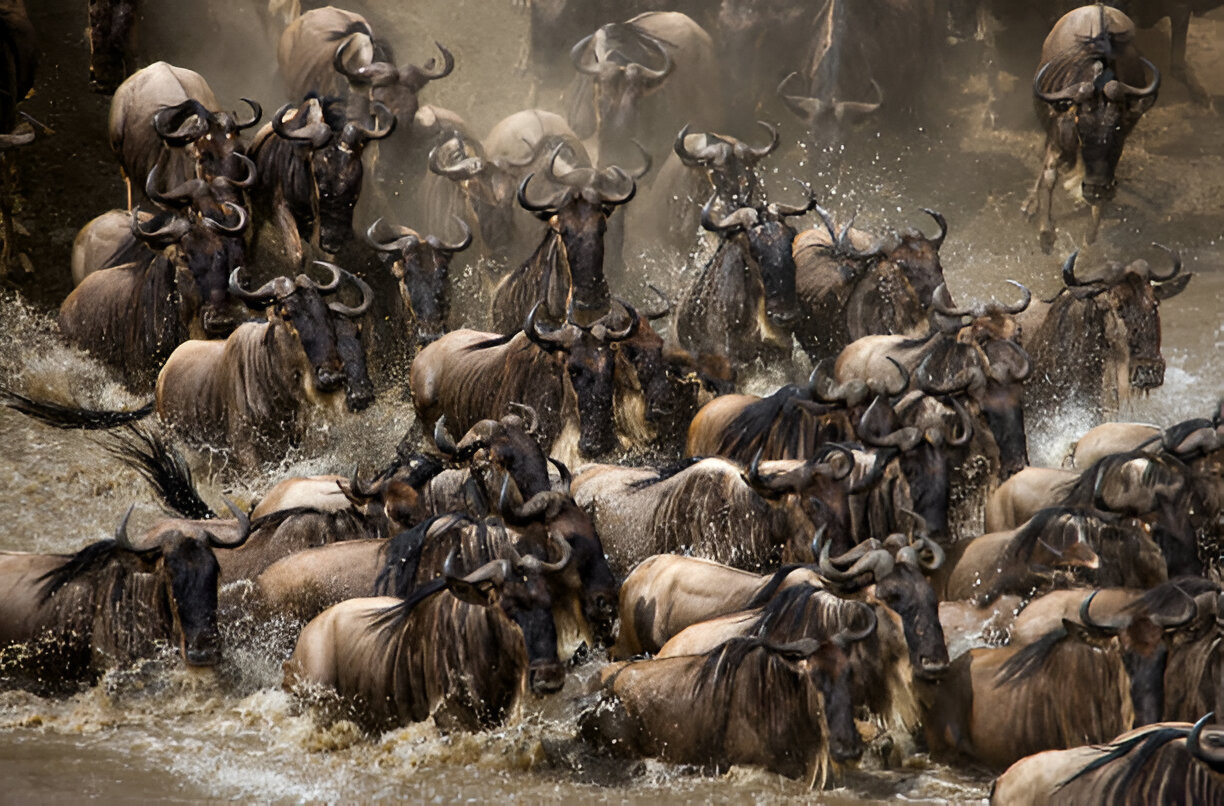
- Tanzania - East Africa
How Long Is a Typical Kilimanjaro Trek?
Mount Kilimanjaro, Africa’s tallest mountain and the world’s highest free-standing peak, is one of the most sought-after trekking destinations on the planet. Each year, thousands of adventurers dream of reaching Uhuru Peak at 5,895 meters (19,341 feet). One of the first questions travelers ask when planning their climb is: “How long is a typical Kilimanjaro trek?”
The answer isn’t the same for everyone—it depends on the chosen route, pace, acclimatization, fitness level, and overall trekking experience. In this guide, we’ll break down the details of Kilimanjaro trekking duration, what affects it, and how to choose the best number of days for a safe and successful climb.
Understanding the Typical Length of a Kilimanjaro Trek
The typical Kilimanjaro trek lasts between 5 and 9 days. This duration varies because there are several different routes up the mountain, each with different terrain, altitude profiles, and acclimatization schedules.
Shortest treks: Some routes can technically be done in 5 days, but this is not recommended due to a higher risk of altitude sickness.
Standard treks: The most common itineraries last 6 to 8 days, offering a good balance between pace and acclimatization.
Longest treks: The Northern Circuit route lasts 9 to 10 days, maximizing acclimatization and summit success rates.
In short, while it is possible to complete the climb quickly, the typical Kilimanjaro trek is around 7 to 8 days, giving climbers the best chance of safely reaching the summit.
Why Trekking Duration Matters
When asking “How long is a typical Kilimanjaro trek?”, it’s not just about convenience or scheduling—it’s about safety and success. The time you spend on the mountain directly impacts your ability to adapt to high altitude.
1. Acclimatization
The main reason treks vary in length is the need for your body to adjust to thin air at higher altitudes. Going too fast increases the risk of altitude sickness, which can end your climb prematurely.
2. Summit Success Rates
Statistics show that longer routes—7 days or more—have higher summit success rates compared to shorter treks. More time on the mountain means your body can adapt gradually, giving you the strength to push through the final ascent.
3. Enjoying the Experience
Kilimanjaro is not only about reaching Uhuru Peak. The trek takes you through stunning ecosystems: lush rainforest, moorland, alpine desert, and the icy summit. A longer trek lets you enjoy the scenery rather than rush past it.
Chat with our expert direct via email!
Kilimanjaro Routes and Their Typical Lengths
When planning, you’ll need to choose a route, and each has its own typical duration. Here’s a breakdown:
1. Marangu Route (5–6 Days)
Known as the “Coca-Cola Route,” it is the only route with hut accommodations.
Typical duration: 5 or 6 days.
Success rate: Lower on the 5-day option, higher with 6 days.
Best for: Those on a tighter schedule, but less ideal for acclimatization.
2. Machame Route (6–7 Days)
Also called the “Whiskey Route.”
Most popular route with diverse scenery.
Typical duration: 6 or 7 days.
Success rate: High on 7 days due to extra acclimatization.
3. Lemosho Route (7–8 Days)
Known for being scenic and less crowded at the start.
Typical duration: 7 or 8 days.
Success rate: Very high, thanks to good acclimatization.
Best for: Trekkers who want a balance of challenge and success.
4. Rongai Route (6–7 Days)
Approaches from the north, near the Kenyan border.
Typical duration: 6 or 7 days.
Less crowded, more wilderness feel.
5. Shira Route (7 Days)
Starts higher up, joining the Lemosho Route.
Typical duration: 7 days.
Suitable for those already acclimatized to altitude.
6. Northern Circuit Route (9–10 Days)
Longest route on Kilimanjaro.
Typical duration: 9 to 10 days.
Highest summit success rate due to gradual acclimatization.
7. Umbwe Route (5–6 Days)
Steepest and most challenging route.
Typical duration: 5 or 6 days.
Not recommended for beginners due to limited acclimatization time.
Comparing Trek Durations
| Route | Minimum Days | Recommended Days | Success Rate |
|---|---|---|---|
| Marangu | 5 | 6 | Moderate |
| Machame | 6 | 7 | High |
| Lemosho | 7 | 8 | Very High |
| Rongai | 6 | 7 | High |
| Shira | 7 | 7 | High (for acclimatized climbers) |
| Northern Circuit | 9 | 10 | Very High |
| Umbwe | 5 | 6 | Low |
From this, it’s clear that the typical Kilimanjaro trek is around 7 to 8 days, depending on the chosen route.
Factors That Influence Trek Duration
When considering how long is a typical Kilimanjaro trek, remember that several factors can impact your journey:
Route Choice – Each route has a standard itinerary.
Acclimatization Needs – Slower pace = higher success.
Fitness Level – Stronger trekkers may handle shorter climbs, but altitude affects everyone differently.
Experience – First-time trekkers are advised to take longer routes.
Budget & Time – More days cost more, but greatly increase your chances of reaching the summit.
Why Longer Treks Are Recommended
Even though shorter climbs may seem appealing, most guides and operators recommend at least 7 days. Here’s why:
Better acclimatization → Lower risk of altitude sickness.
Higher success rates → More time to adapt means better summit chances.
Less stress → You won’t need to push too hard each day.
Scenic variety → More time to appreciate Kilimanjaro’s unique landscapes.
Sample Itineraries
To give a better idea of how long a Kilimanjaro trek is, here are two sample itineraries:
7-Day Machame Route Itinerary
Day 1: Machame Gate to Machame Camp
Day 2: Machame Camp to Shira Camp
Day 3: Shira Camp to Barranco Camp (via Lava Tower for acclimatization)
Day 4: Barranco Camp to Karanga Camp
Day 5: Karanga Camp to Barafu Camp
Day 6: Summit attempt (Uhuru Peak) and descend to Mweka Camp
Day 7: Mweka Camp to Mweka Gate
8-Day Lemosho Route Itinerary
Adds one extra acclimatization day compared to Machame, improving success rates.
FAQs – How Long Is a Typical Kilimanjaro Trek?
Q: What is the shortest Kilimanjaro trek?
A: The shortest is 5 days (Marangu or Umbwe), but not recommended due to low success rates.
Q: What is the best length for a Kilimanjaro trek?
A: 7 to 8 days is considered the ideal length, balancing acclimatization and success rates.
Q: Can I climb Kilimanjaro in 4 days?
A: No. It is not possible or safe due to altitude. The minimum is 5 days.
Q: Does a longer trek mean it’s harder?
A: Not necessarily. Longer treks actually spread out the difficulty, making it easier and safer.
Q: How long does the final summit push take?
A: Summit day is the toughest, lasting 10–14 hours from midnight ascent to descent.
Final Thoughts
So, how long is a typical Kilimanjaro trek? The majority of climbers spend 7 to 8 days on the mountain. While it is possible to climb in as few as 5 days, this is not recommended for safety reasons. Longer treks, such as the Northern Circuit (9–10 days), give the best acclimatization and the highest chance of standing proudly on Uhuru Peak.
When planning your adventure, remember: the time you spend on Kilimanjaro is directly linked to your safety, enjoyment, and summit success. Choosing the right duration is one of the most important decisions you’ll make for your climb.
📌 Build Your Tour Today!


Olduvai Tours Tan_Africa
We ensure that your journey is not just a trip but a meaningful exploration of Tanzania’s natural and cultural treasures. Let us turn your dream safari into reality!
Booking your Adventure with Olduvai Tours Tan Africa
Olduvai Tours Tan Africa specializes in creating unforgettable Tanzania safari experiences, offering expert guides, personalized itineraries, and high-quality service.
Other Tours You May book with Olduvai Tours Tan_Africa:
Tanzania – East Africa Is It Possible to Do a Day Trip to a Park from Arusha? Arusha is…
Book 4 Days Tanzania Luxury Safari Itinerary Book Your 4 Days Luxury Safari Package! Tour Package Details 📍 Tarangire…
Affordable Group Joining Safari in Tanzania 2025 – Budget-Friendly 📍 Serengeti National Park, Ngorongoro Crater and Tarangire National Park…

